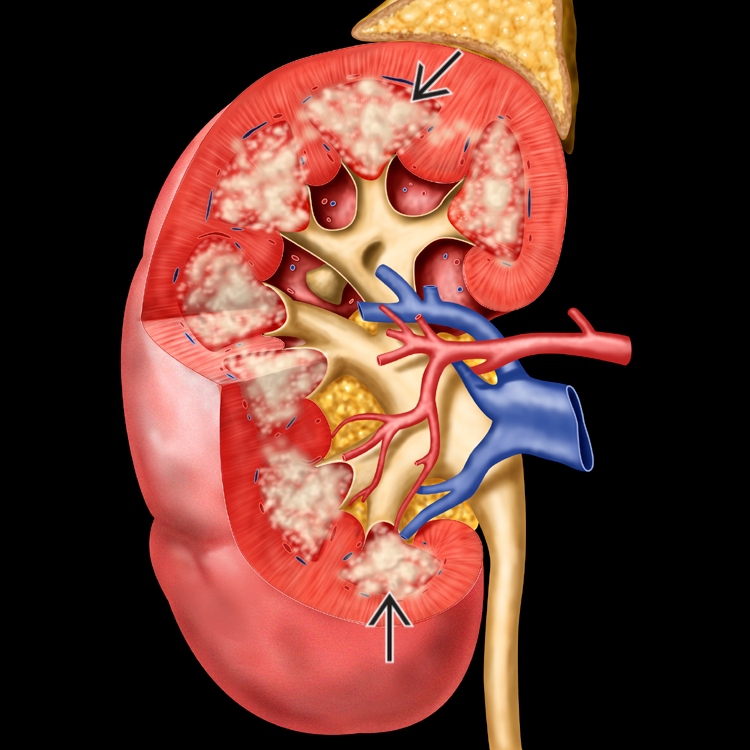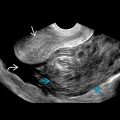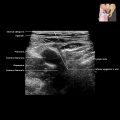KEY FACTS
Terminology
- •
Medullary nephrocalcinosis (NC), cortical NC
- •
Calcification of renal parenchyma
Imaging
- •
Medullary NC: Generalized increased echogenicity of renal pyramids with reversal of normal corticomedullary differentiation ± shadowing
- •
Cortical NC: Increased cortical echogenicity ± acoustic shadowing
- •
Noncontrast CT is best imaging modality in adults
- ○
Exception: CT intravenous pyelogram may be best for medullary sponge kidney given high sensitivity for stones and collecting tubule dilation
- ○
- •
US is 1st diagnostic imaging option in infants and children with suspected NC
Top Differential Diagnoses
- •
Renal calculus
- •
Emphysematous pyelonephritis
- •
Other causes of hyperechoic medulla: Metabolic and protein deposition disorders, autosomal recessive polycystic kidney disease
Pathology
- •
Most common causes of medullary NC are hyperparathyroidism, renal tubular acidosis type 1 (distal), and medullary sponge kidney
- •
Most common causes of cortical NC are acute cortical necrosis, chronic glomerulonephritis, and oxalosis
- •
Medullary and cortical NC are rare and seen in oxalosis
Diagnostic Checklist
- •
Oxalosis typically causes both medullary and cortical NC
- •
NC is often associated with urolithiasis
Scanning Tips
- •
NC is often associated with renal calculi
- •
Look for subtle renal calculi with both color Doppler (twinkling artifact) and confirmation with grayscale (posterior acoustic shadowing)
- ○
Increase PRF to 60-80 cm/s to distinguish twinkling artifact from aliasing artifact
- ○
 in renal the pyramids, representing medullary nephrocalcinosis.
in renal the pyramids, representing medullary nephrocalcinosis.
 of hyperechoic rim outlining the pyramid. Posterior acoustic shadowing
of hyperechoic rim outlining the pyramid. Posterior acoustic shadowing  helps identify a stone
helps identify a stone  .
.
Stay updated, free articles. Join our Telegram channel

Full access? Get Clinical Tree








